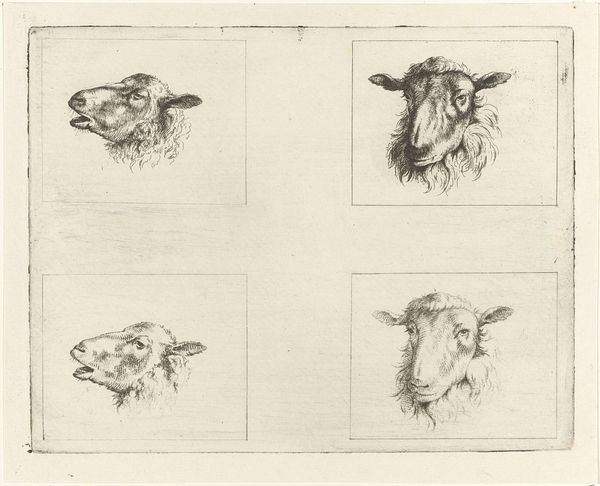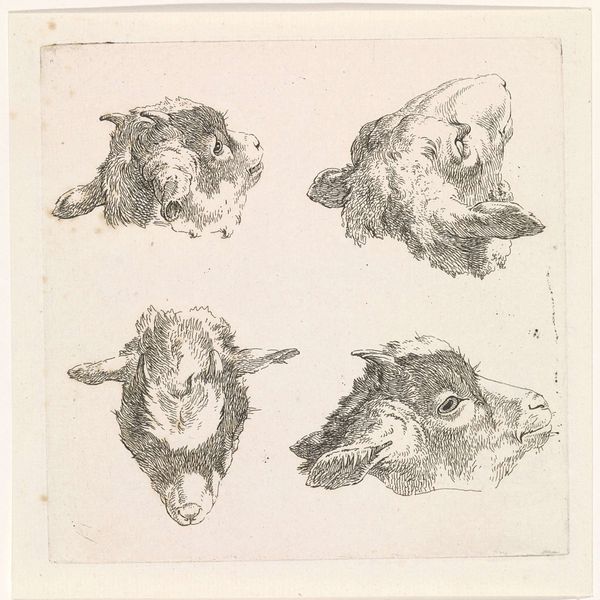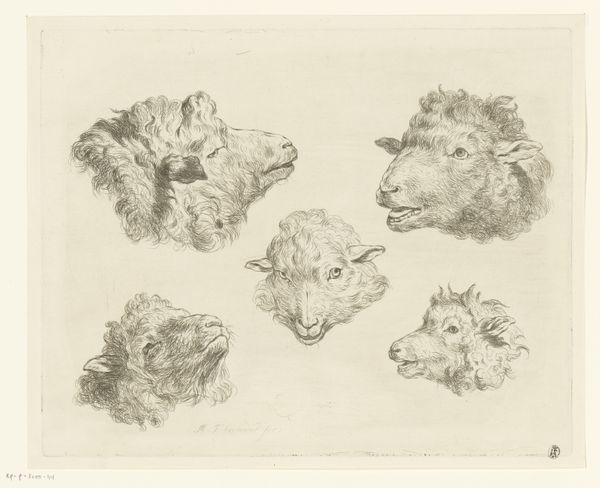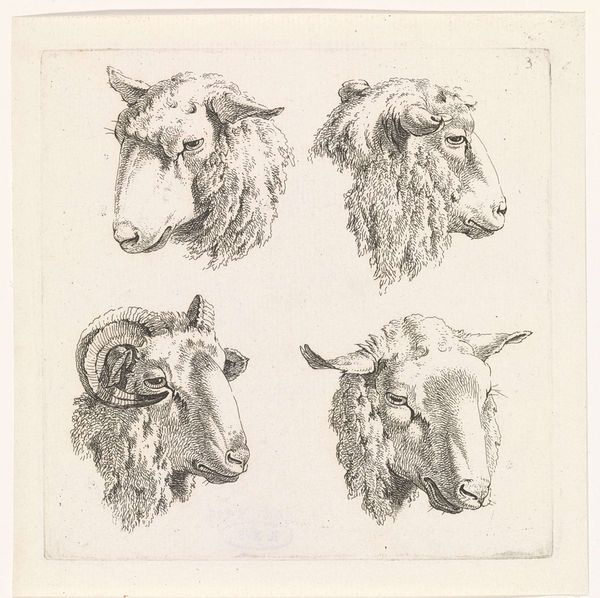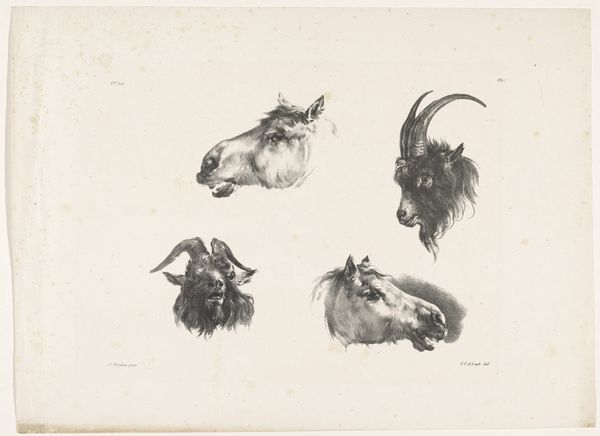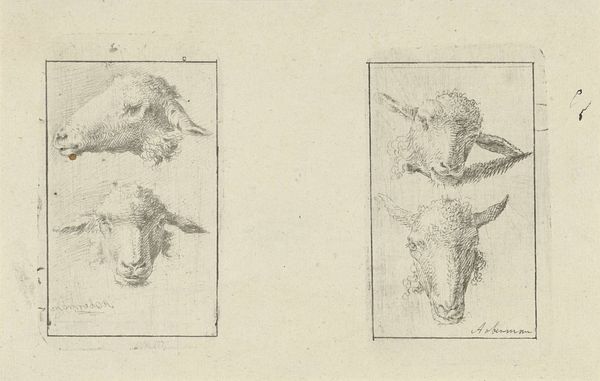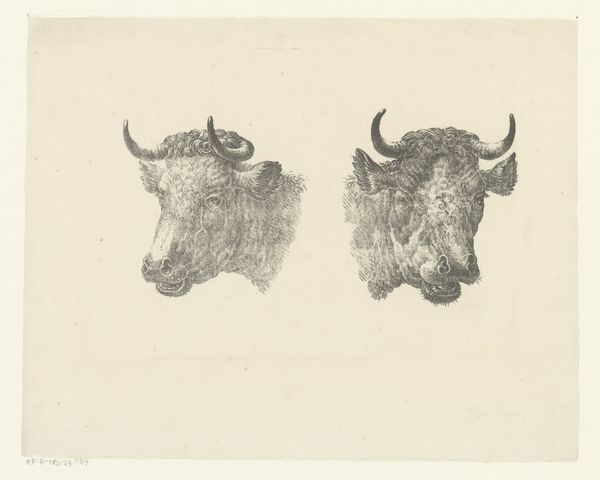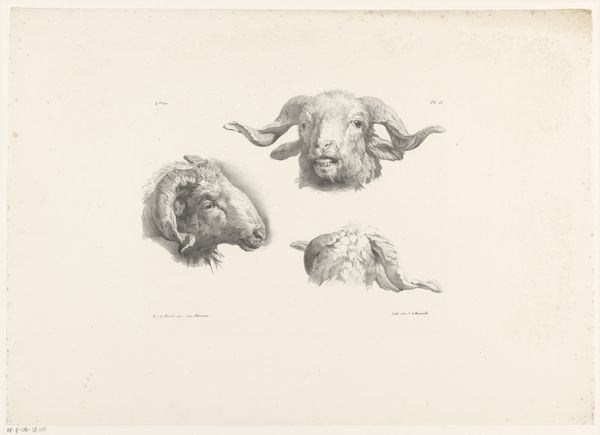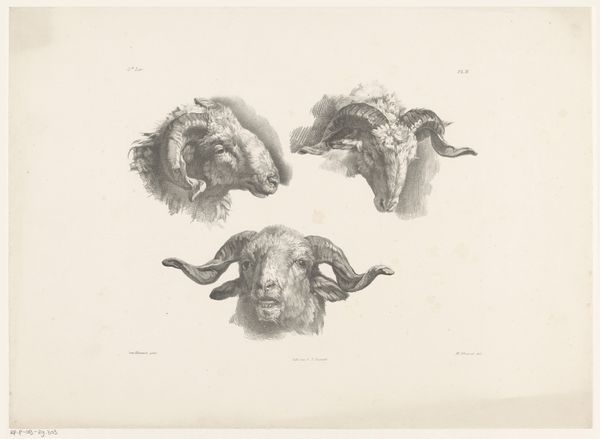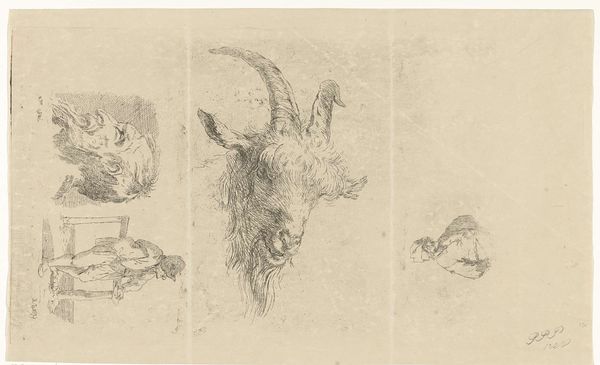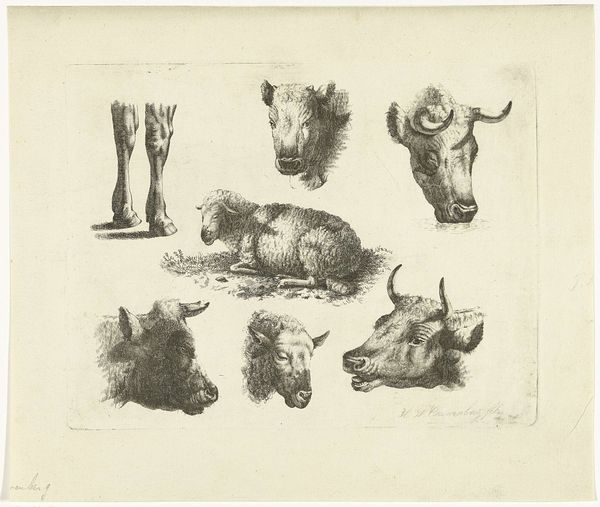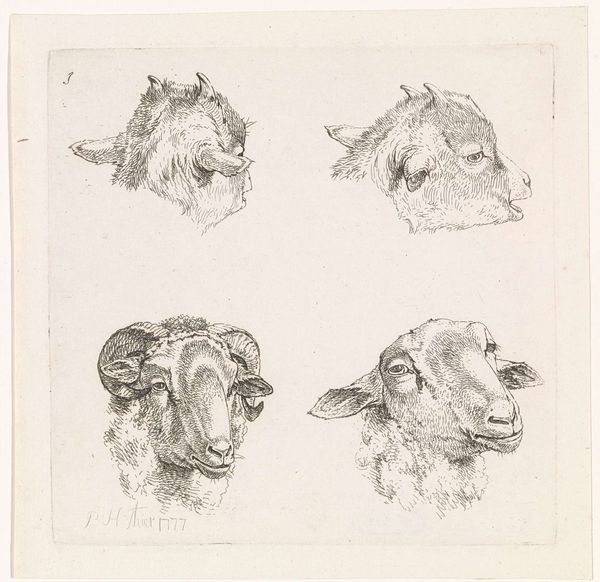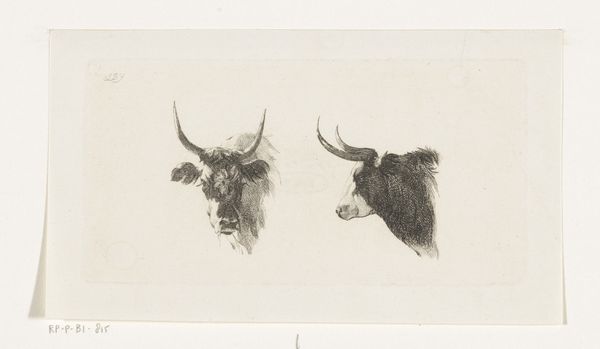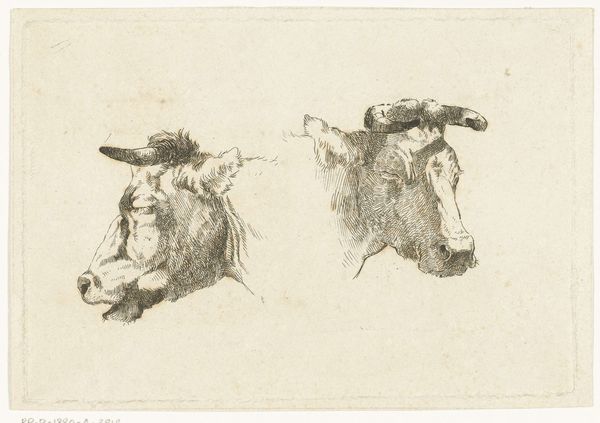
drawing, print, engraving
#
drawing
#
animal
# print
#
engraving
#
realism
Dimensions: height 167 mm, width 211 mm
Copyright: Rijks Museum: Open Domain
Editor: This is "Studieblad met zes schapenkoppen," or "Study Sheet with Six Sheep Heads," by Johannes Janson, made between 1761 and 1784. It's an engraving, so a print made from a drawing. They’re…just sheep heads! It seems like a technical exercise, but I'm curious, what do you see in it? Curator: For me, the intrigue lies in understanding the *means* of this seemingly simple depiction. Consider the process: Janson, likely working in a print shop context, meticulously etched these sheep heads. The choice of engraving itself speaks to a reproducibility, a democratization of imagery. These "study sheets" weren't high art; they served a purpose, likely for artisans or students. Editor: So, it's about understanding the image through its production? Not necessarily some deeper meaning of, like, sheep? Curator: Exactly. The materials themselves – the copper plate, the acid, the ink – dictate the aesthetic. Notice the crisp lines, the precision? This speaks to the skill, the *labor* involved in replicating the natural world through a mechanical process. And it wasn't created in a vacuum. How did this serve society? Editor: Maybe it was meant as practice? To study animal anatomy? Or maybe even to be used by tapestry makers or sculptors, something like that? Curator: Precisely. It's fascinating to consider the network of production and consumption surrounding these images. They highlight the intersection of art, craft, and industry, which really pushes us to reconsider what “art” even meant at the time, or what it means *now.* It goes beyond simple realism. Editor: That makes a lot of sense. I always thought about art as the finished product, not so much what went into making it, and who it was even for. Now, looking at those sheep, I’m thinking about workshops, labor, and artistic training! Curator: Precisely, and the beauty is that you now have a deeper appreciation of its relevance to today's artistic, industrial, and socio-economic ecosystem.
Comments
No comments
Be the first to comment and join the conversation on the ultimate creative platform.
